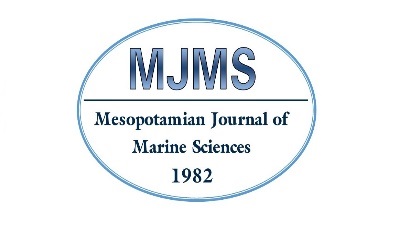Abstract
Typha domingensis is considered one of the most important plants endemic in Iraq and is widely used in adsorption due to its global distribution in natural environments and its ability to survive in contaminated sites. The samples were collected from various areas in Basrah province southern Iraq and were exploited for removed of lead ions (Pb+2) from its aquatic solution. Several parameters (pH, contact time, temperature and mixing speed) were studied to obtaining optimal conditions for Pb+2 removals. Flame atomic absorption Spectrometry (FAAS) was used to measure the concentration of lead and the adsorption ratio on adsorbent surface, which showed high efficiency to remove Pb+2 (95.9 %) at pH 6.5, 10 min, 15 ºC, and 200 rpm. Scanning electron microscope (SEM) and Fourier transform infrared spectroscopy (FT-IR) were used to determine the surface morphology and functional groups. The optimum conditions were applied to a real sample of industrial waste and showed an adsorption ratio of 32.4%.
Keywords
مطياف الامتصاص الذري، مطياف الأشعة تحت الحمراء، ايون الرصاص، المجهر الإلكتروني الماسح، Typha domingensis
Abstract
نبات Typha domingensis هو من أهم النباتات المستوطنة في العراق ويستخدم بشكل واسع في الامتزاز بسبب انتشاره الكبير في البيئات الطبيعية وقدرته على البقاء في المواقع الملوثة. جمعت العينات من مناطق مختلفة في محافظة البصرة جنوب العراق وتم استغلالها لإزالة أيونات الرصاص (Pb+2) من محلولها المائي. تمت دراسة العديد من المعلمات مثل الرقم الهيدروجيني ووقت التلامس ودرجة الحرارة وسرعة الخلط للحصول على الظروف المثلى لإزالة أيونات الرصاص. استخدم مطياف الامتصاص الذري لقياس تركيز الرصاص ونسبة الامتزاز على سطح المادة الماصة والذي أظهر كفاءة عالية في إزالة أيونات الرصاص بنسبة 95.9) % ( عند الرقم الهيدروجيني 6.5 ووقت التلامس 10 دقائق ودرجة الحرارة 15 درجة مئوية وسرعة الخلط 200 دورة في الدقيقة. كما تم استخدام المجهر الإلكتروني الماسح SEM) ومطيافية الأشعة تحت الحمراء FT- IR لتحديد شكل السطح والمجموعات الوظيفية. بعد ذلك تم تطبيق الظروف المثلى على عينة مخلفات صناعية وقد أظهرت نسبة امتزاز 32.4%.
Keywords
Flame atomic absorption Spectrometry
Fourier transform infrared spectroscopy
Lead
Scanning Electron Microscope
Typha domingensis
